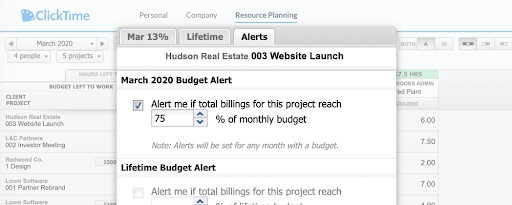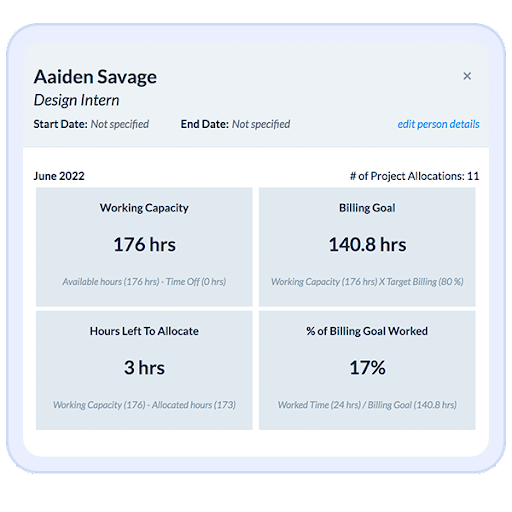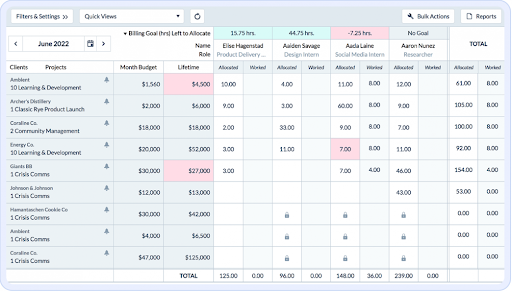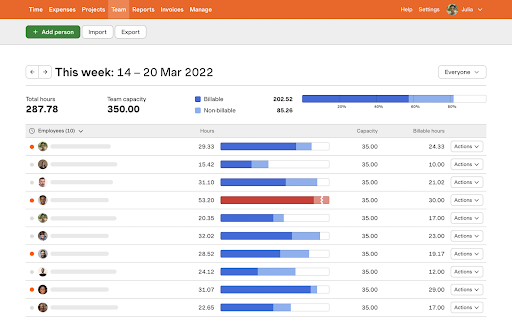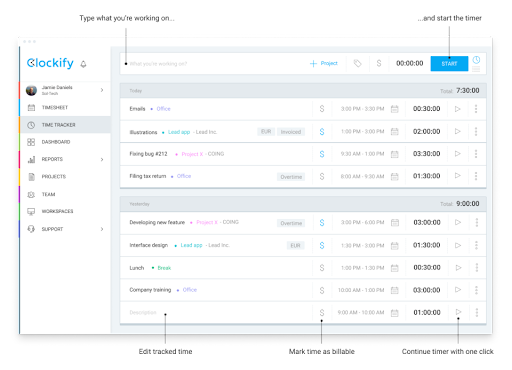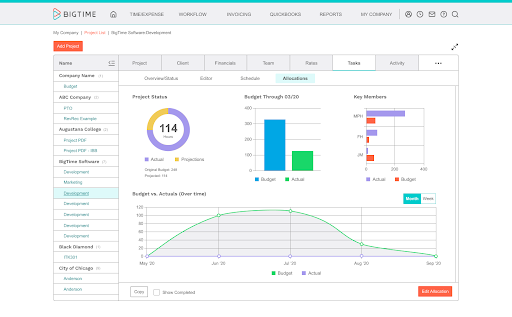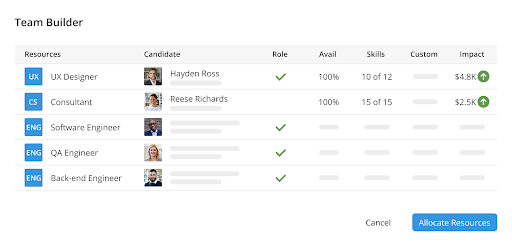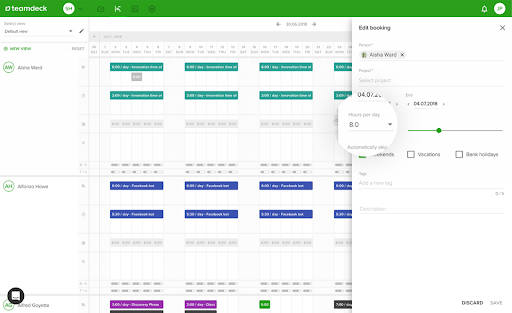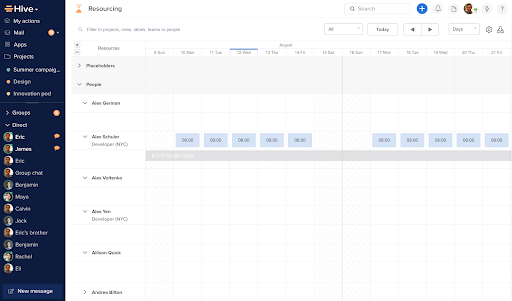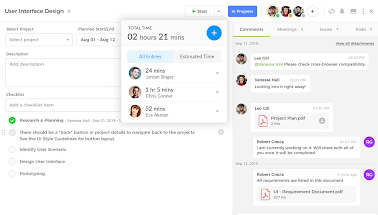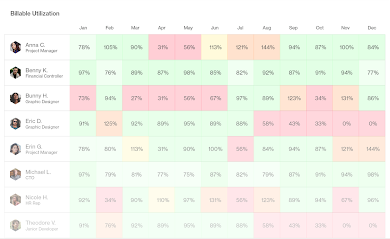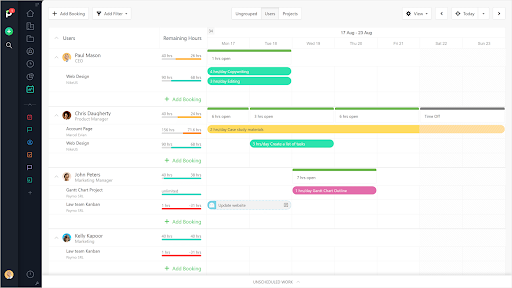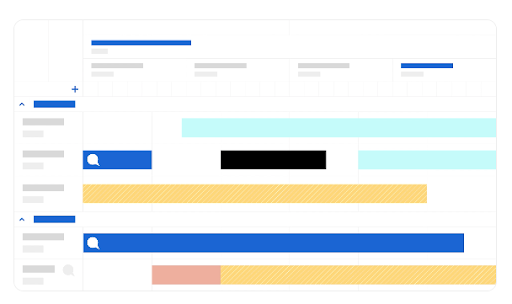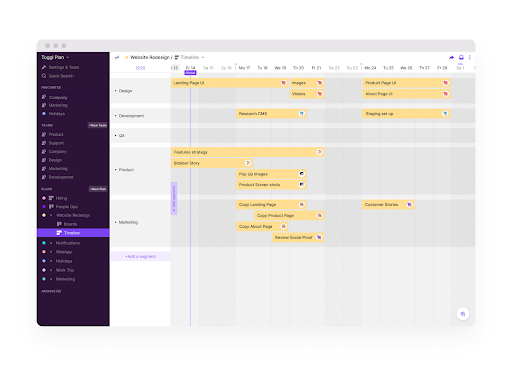The 12 Best Resource Management Tools of 2023
Table of Contents
Earlier this year, it was reported that the global human resource management market is experiencing an 11.4% CAGR and is on track for a market valuation of $56.15 billion by 2030.
Why such massive growth in the resource management sector?
Because companies now realize that forecasting, allocating, and managing resources effectively is one of the best ways for service-based companies to improve their bottom line.
Whether using data to tighten up timelines to stay on budget or adjusting resource allocation to reduce burnout and improve performance, the system your business uses to resource and manage projects is key.
That’s why so many companies are moving to resource management tools.
Why the Right Resource Management Tool is the Key to Your Project’s Success
Resource management is the process of planning, scheduling, and allocating resources to set a project up for successful completion. Project management occurs alongside the delivery of services, ensuring that resources are applied effectively and that the project is on track and on budget.
Depending on the nature of your services and the size of your company, these resources can be physical and digital goods or your workforce.
For larger firms that focus on digital services, project and resource management fall under the purview of two positions:
|
Task |
Stakeholder |
Level of Involvement |
|
Resource Management |
Department- or Company-wide |
|
|
Project Management |
Individual Project(s) |
Project and operations managers typically use a combination of documents, spreadsheets, and software to accomplish their tasks.
Unfortunately, a partial or complete reliance on manually filling out documents and spreadsheets leads to slower, error-prone processes—in terms of both forecasting and managing your projects.
Hamstringing your operations and project managers with spreadsheets and out-of-date software tools negatively impacts project outcomes and your company’s bottom line overall.
According to PMI, companies without sufficient project management technology run over budget 54% of the time.
And that’s before considering the cost of employee burnout and overservicing clients.
Clearly, it’s time to move on from the spreadsheet.
3 Reasons To Ditch Spreadsheets for Resource Management Software
Businesses are operating in the era of cloud and real-time data; analog solutions like spreadsheets simply don’t have the same benefits at scale as resource management software.
Here are three main reasons your company needs to move on from Excel and Sheets:
1. Spreadsheets Don’t Track in Real-Time
Obtaining accurate data to base your projections on is one of the most difficult aspects of resource management. With spreadsheets, you have to rely on your team to 1) accurately keep track of the hours they work and 2) remember to store that information within a spreadsheet.
Resource management platforms have built-in timers, custom timesheets, and daily prompts to ensure you’re working off accurate data.
2. Manual Processes are Costly and Error-Prone
Simple mistakes in data entry or communication can impact your revenue, so it’s important to automate as much of your process as possible.
While the concept is simple, spreadsheets are complicated to learn and difficult to safeguard. Considering other team members need to access your resources, it’s best to adopt processes with built-in guardrails.
3. Improved collaboration
Spreadsheets can be difficult for one person to manage. Getting a whole team involved is a recipe for disaster. As a resource or project manager, you need to collaborate with the rest of your department quickly and without introducing those costly errors into your workflows or data.
Resource management tools make it easy to collect information from and communicate with your team members, so collaboration is never a barrier.
Top Features You’ll Need in a Resource Management Tool
Even if your company has already ditched the spreadsheet, it’s worth taking a look at your current time-tracking system as well.
Does it provide you with the flexibility, customization, and analytics you need to successfully resource and manage your projects? Or are you just sticking with the status quo out of pure organizational muscle memory?
Take a look at your time-tracking and resource management tools with fresh eyes, and note whether it provides the following features:
User-friendly User Interface: To drive adoption, your ideal solution needs to be easy to use, available across all devices, and offer round-the-clock support if any complications arise.
Customizations: The ability to add, remove, and customize the input fields and the interface makes it easy to apply your system across any project.
Integrations: Your company already has plenty of tools in its tech stack; making sure your tool connects with your core systems will help improve the flow of data and reports.
Real-time Reporting: When issues arise, you don’t have time to wait for last-minute updates to documents. You need accurate information on all WIP at the tip of your fingers at all times.
Easy & Accurate Forecasting: Businesses often fall for the planning fallacy and pay for it by going over budget. Resource management tools show you the real cost of your past projects so that you can make better decisions for the next one.
Role-Based Assignment: Specific projects call for resources with specific talents. The right platform automates the resource selection process, identifying the best candidate for a new project to keep those clients happy.
Job and Resource Filters: Resource managers who oversee certain departments or projects will save time with a platform that allows them to filter out extraneous information based on employee and project.
Time Off: One thing you’ll want to consider when assigning people to projects is when assignees are on holiday. A platform that includes time off details will help you avoid assigning hours to employees who will be off on a beach somewhere during the timeframe.
Employee Capacity Management: It’s not just about the bottom line. You also want to look out for the health of your employees. Resource management tools automatically identify employees over capacity, so you can intervene before they burn out.
Budget Alerts: The key to making sure you’re project is running on track and within budget, you’ll want to keep an eye on how many hours your employees are dedicating to a specific task. A resource management tool will make this easy with real-time reports that show how much time is tracked against a project, so you can make adjustments before it’s too late.
The Top 12 Resource Management Tools
If you’re ready to ditch your spreadsheet system and outdated software tools, you’ll want to do your due diligence with respect to selecting a new resource management platform.
1. ClickTime
As one of the leading resource management tools on the market, ClickTime provides both resource and project managers with the tools they need to see successful end-to-end completion of projects. Here are some of the main functions it provides:
- Time and expense tracking
- Project and resource management
- Business intelligence and reporting
- Executive time-tracking dashboard
2. Harvest
Harvest is a time tracking and resource management tool that lets you monitor hours across desktop and mobile, create reports on project-specific and company-wide usage and quickly gain the insights you need to make decisions.
However, the analytics platform takes time to learn, and there aren’t unlimited options for project attribution fields.
3. Clockify
Clockify is primarily a time-tracking tool that provides free and paid versions for individual contractors and small teams. It provides a work timer for real-time tracking, easy exporting and sharing of reports, and even collecting data from web pages and apps used.
4. BigTime
BigTime is a resource management tool that lets companies track and manage time, costs, and payments across all projects. It also allows teams to customize their various tracking documents to reduce the risk of errors and omissions, but isn’t the most intuitive platform to use.
5. Kantata
Kantata, previously known as Mavenlink, provides a suite of tools to manage resources, projects, and finances. With integrations and built-in intelligence platforms, it also helps managers analyze data and share it easily with other stakeholders, but doesn’t have the most intuitive user interface.
6. Teamdeck
Teamdeck is another resource management tool that gives project and resource managers insight into resource utilization and allocation, as well as time tracking and planning features for companies with a mobile workforce.
7. Hive
Hive is primarily a project management platform that helps PMs manage their respective projects and ensure all milestones are reached. Hive also offers time tracking and analytics tools so companies can keep tabs on resourcing.
8. nTask
nTask is described as a complete project management tool solution that covers all aspects of resource and project management. This includes features like time tracking, kanban boards, Gantt charts, and online team collaboration.
9. Forecast
Forecast is an AI-native project and resource management application that uses machine learning to improve resource management, team collaboration, project accounting, and business intelligence.
10. Paymo
Paymo is a project management app specifically designed for startups and SMBs. It provides a single platform for employees to track their time and for management to oversee, invoice, and analyze their various projects.
11. Ganttic
Ganttic is a resource planning and project management software that supports teams looking for collaborative and automation features. It also has additional security features for those who need things like customizable user permissions or automatic data backups.
12. Toggl
Toggl actually provides companies with two platforms to assist with resource and project management: Toggl Track and Toggl Plan. The former lets employees track time across mobile, web, and desktop applications, while operations managers use the latter to plan for upcoming projects.
And remember—this is just the tip of the iceberg regarding project and resource management tools out there. Instead of getting overwhelmed trying to analyze every available option, get started with a solution that’s purpose-built for service-based businesses.
Achieve Resource Management Success with ClickTime
As a comprehensive time-tracking and resource management tool, ClickTime gives you everything you need to plan and execute your project—on time and on budget.



